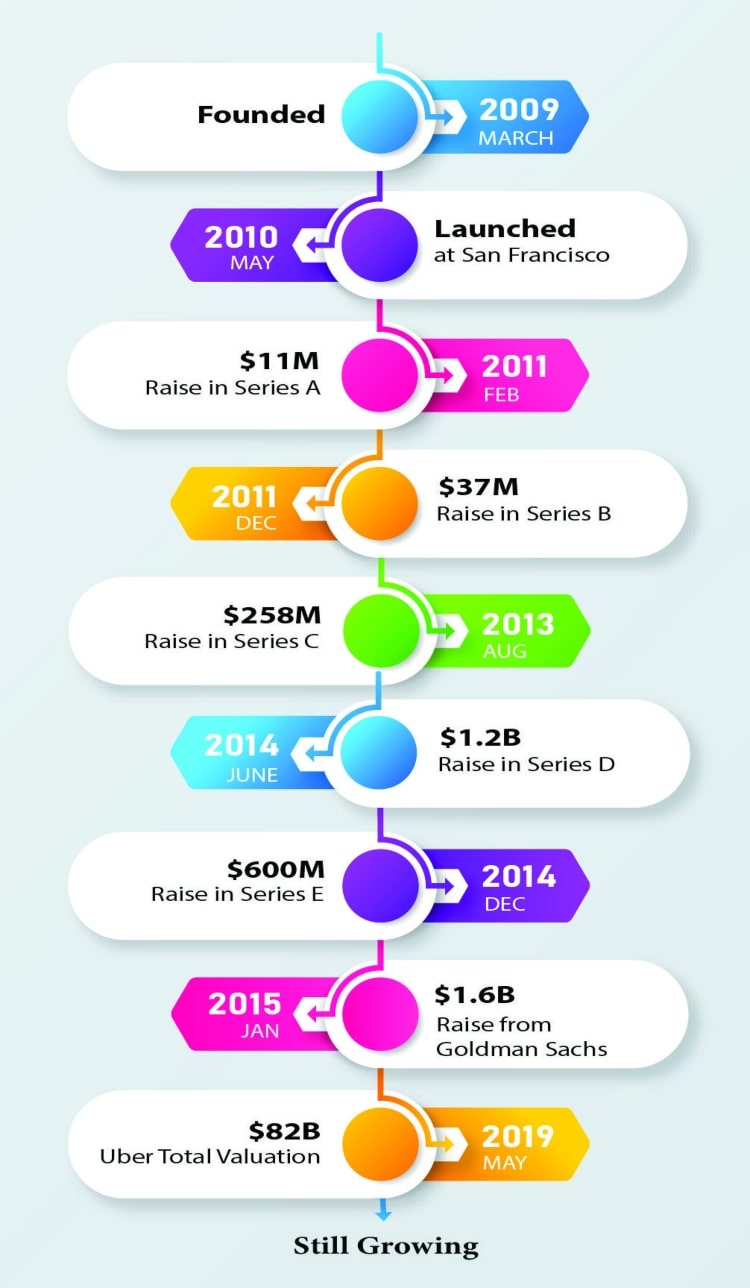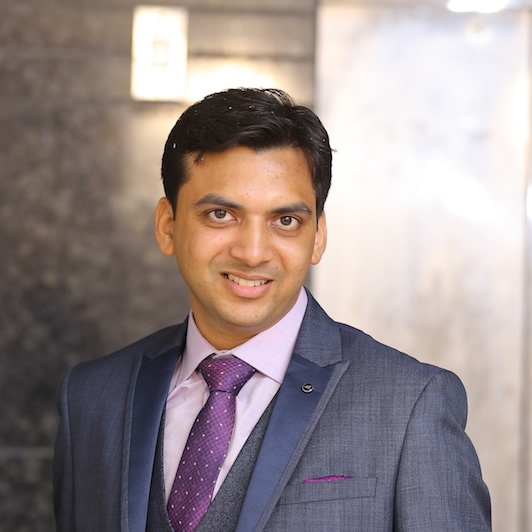
Step-by-Step Guide to Launching Your Own Uber Clone App in 2024
Taxi booking applications have seamlessly integrated into our daily routines, providing a convenient solution for various travel needs, whether it's visiting a café, catching a flight, or running errands. These apps offer a safe, fast, and comfortable mode of transportation, addressing the challenges of daily commuting.
The taxi app market is experiencing exponential growth, with a projected size of $43.15 billion in 2024, expected to further expand to $64.74 billion by 2028. This burgeoning industry presents a lucrative and timely opportunity that should not be overlooked.
To navigate and invest wisely in this market, learning from the best is crucial. That's why we have compiled a list of top-performing taxi booking apps, detailing their features and market sizes. Acquiring knowledge about these industry leaders will provide valuable insights into the key aspects that contribute to their success in a competitive market.
Creating a successful Uber clone app in 2024 requires a detailed plan that covers market research, app development, legal considerations, marketing strategies, and launch execution. This comprehensive guide will walk you through each step of launching your own Uber clone app, ensuring you have a solid foundation for success in the competitive ride-sharing market.
Discover the key steps to launch a successful Uber clone app in 2024 with a comprehensive guide. Explore market insights, legal considerations, business model development, and technology choices. Learn about essential features for passengers and drivers, safety implementations, testing strategies, and effective marketing for a strategic launch. Post-launch, prioritize customer support, continuous improvement, and consider business expansion. The blog emphasizes the importance of a strategic approach, meeting market needs, and creating a standout service to succeed in the competitive ride-sharing landscape. For expert guidance, it suggests consulting a Taxi Booking App Development Company.
Market Statistics for Taxi Booking App
Exploring Taxi Booking App Market Trends To gain insights into the taxi booking market, Uber statistics play a pivotal role. Key industry statistics and reasons driving widespread interest from businesses and investors include:
- Projected global market size: $283 billion by 2028, boasting a 4.2% Compound Annual Growth Rate (CAGR) from 2023 to 2028. Current estimated revenue stands at $133 billion in 2024.
- Over 300 million users worldwide, with DiDi and Uber jointly commanding around 150 million users.
- DiDi emerges as the market leader with the highest revenue (approximately $19.7 billion in 2023), followed closely by Uber in the second position with revenue reaching $14 billion in 2023.
These statistics underline the lucrative nature of the market, highlighting substantial opportunities for businesses. As we delve into market dynamics, it's imperative to focus on the industry's foremost player, Uber.
The ride-sharing industry has seen exponential growth over the past decade, primarily driven by the success of companies like Uber. With the increasing demand for convenient and efficient transportation options, launching an Uber clone app can be a lucrative business opportunity. However, it requires careful planning, execution, and continuous improvement to succeed.
Market Research and Analysis
- Understanding the Market: Before diving into the development process, it's crucial to understand the ride-sharing market's dynamics. Analyze the competition, target audience, and current trends in the industry. Identify gaps in the market that your app can fill, such as catering to underserved locations or offering unique features like eco-friendly rides.
- Legal and Regulatory Compliance: Different regions have varying regulations governing ride-sharing services. Research the legal requirements in your target market, including licenses, insurance, and driver background checks. Ensuring compliance from the start can save you from costly legal issues down the line.

Defining Your Business Model
- Revenue Streams: Consider multiple revenue streams for your app, such as ride commissions, surge pricing, subscription models, and in-app advertisements. A diversified revenue model can enhance your app's profitability.
- User Segmentation: Identify your primary users (drivers and passengers) and understand their needs and preferences. Tailoring your app to meet these needs can enhance user satisfaction and retention.
Mobile App Development
- Choosing the Right Technology: Select a technology stack that ensures your app is scalable, reliable, and easy to maintain. Consider cross-platform development tools like Flutter or React Native to reduce development time and cost.
- Key Features for Passengers: Include essential features such as easy registration, ride booking, fare estimation, real-time tracking, multiple payment options, and ratings and reviews.
- Key Features for Drivers: Develop features such as quick signup, trip alerts, navigation, earnings tracking, and feedback mechanisms.
- Safety Features: Implement safety features like SOS buttons, ride sharing with trusted contacts, and driver verification to build trust with your users.
Testing and Quality Assurance
- Beta Testing: Conduct extensive beta testing with a closed group of users to identify bugs, usability issues, and areas for improvement. Gathering feedback at this stage can be invaluable in refining your app.
- Quality Assurance: Ensure your app meets high-quality standards for performance, security, and user experience. Regularly update the app based on user feedback and technological advancements.
Marketing and Launch Strategy
- Branding: Develop a strong brand identity that resonates with your target audience. Your app's name, logo, and design should reflect your brand values and appeal to potential users.
- Pre-launch Marketing: Build anticipation for your app through social media marketing, influencer partnerships, and press releases. Offer early access or promotional discounts to early adopters.
- Launch: Plan a strategic launch, targeting specific regions or demographics initially, before expanding to other areas. Monitor app performance and user feedback closely during the launch phase.
Post-Launch Support and Expansion
- Customer Support: Provide excellent customer service to handle queries, complaints, and feedback. Prompt and effective support can significantly enhance user satisfaction and loyalty.
- Continuous Improvement: Regularly update the app with new features, performance improvements, and bug fixes. Stay abreast of industry trends and user preferences to keep your app competitive.
- Scaling Your Business: As your app gains traction, consider expanding to new markets or adding additional services like food delivery or courier services to diversify your offerings.
How Does Uber Generate Profits
Uber's Taxi App generates revenue through various channels in its services. Here's a breakdown of how they make money:
- Trip Commissions: Uber takes a percentage of the fare as a commission. For instance, if your ride costs $10, Uber might retain $2.50.
- Surge Pricing: During high demand, prices may increase temporarily, allowing Uber to earn more during peak hours.
- Premium Rides: Uber offers upscale options like luxury cars or SUVs at higher prices, catering to users willing to pay for a more exclusive experience.
- Cancelling Fees: Uber may charge users a fee for cancelling rides after a certain period, managing cancellations and generating additional revenue.
- Renting Cars to Drivers: Uber assists drivers without personal vehicles by renting out cars, creating an additional income stream.
- Ads and Partnerships: Companies pay Uber to display their ads to the extensive user base, leveraging Uber's customer reach for additional revenue.
Conclusion
Launching an Uber clone app in 2024 requires a strategic approach, focusing on market needs, compliance, technology, user experience, and continuous improvement. By following this step-by-step guide, you can position your app for success in the competitive ride-sharing landscape. Remember, the key to success is not just in launching an app but in creating a service that meets the evolving needs of your users and stands out in the marketplace.
To ensure success, reach out to a Taxi Booking App Development Company. They can provide valuable insights into your target market, develop a feature-rich app with user-friendly interfaces, and establish a robust back-end system. Creating milestones and implementing a strong advertising strategy are crucial for building a successful brand. Additionally, prioritizing customer feedback is essential for continuous improvement and maintaining a strong presence in the competitive market.
As a leading taxi app development company, we understand the importance of reliable and efficient transportation solutions for travelers. Our journey through the offerings of Uber Clone app further underlines the industry's commitment to inclusivity, environmental responsibility, and customer satisfaction. Contact our team today to discuss the best and most customized solutions for your business, all within the right budget. Let's work together to elevate your taxi business and thrive in the digital era.
Looking out to start your own venture like Uber? Try out our HireMe Taxi Uber Clone, the easiest way to kick-start your taxi business.





